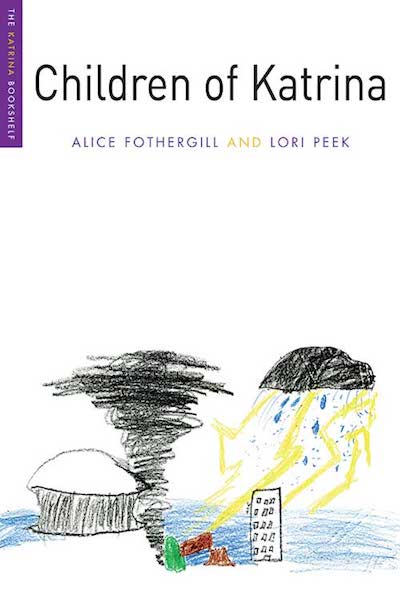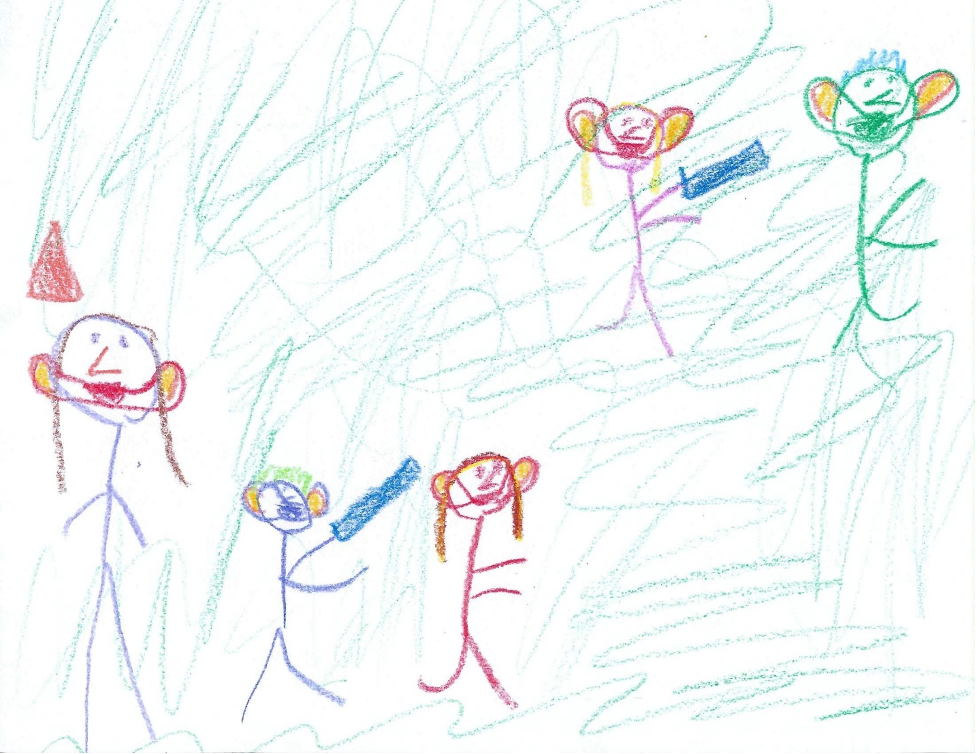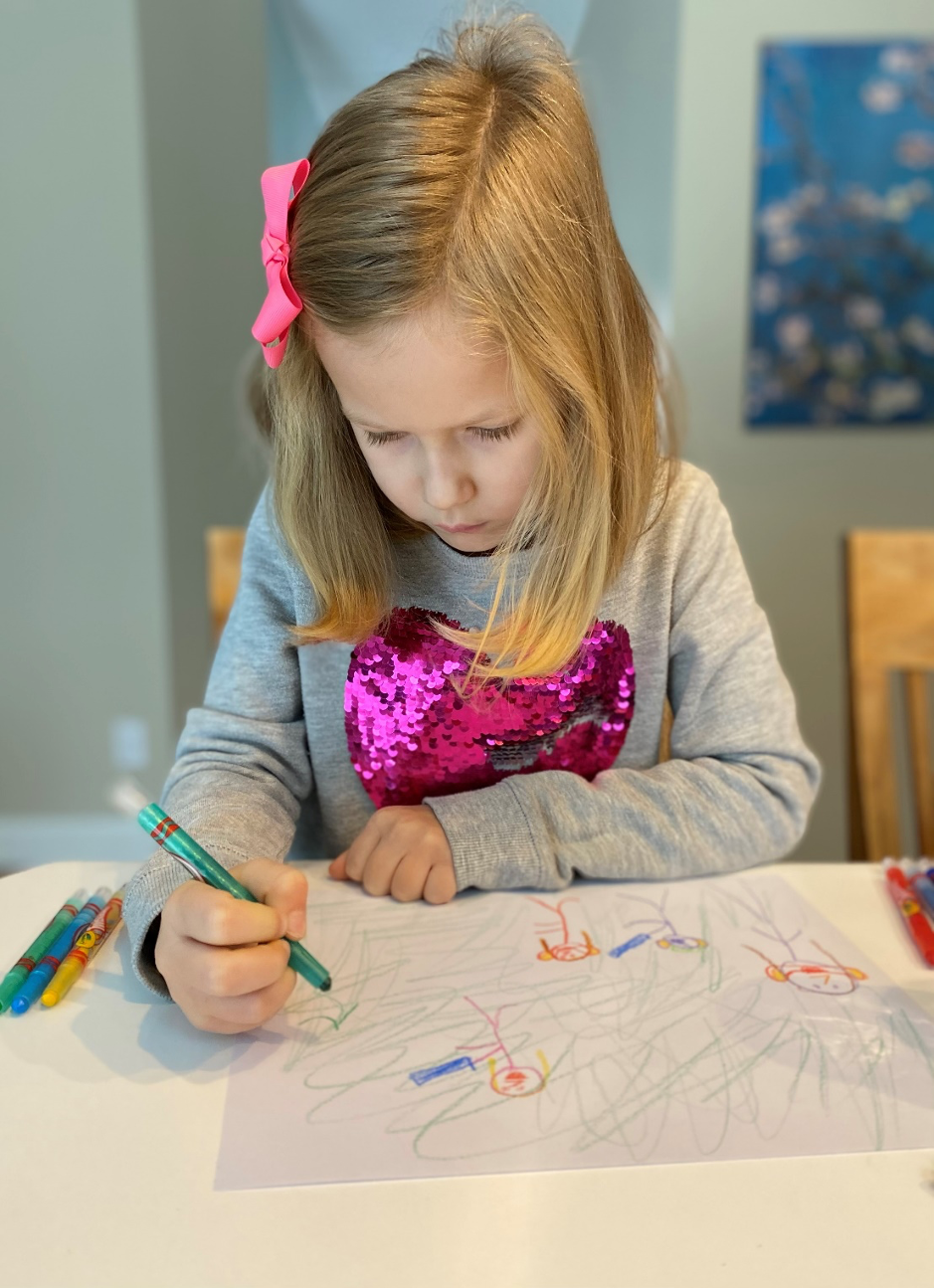As sociologists who study disasters, we have listened to and learned from hundreds of disaster-affected children over the past 15 years.1 Austin, TX: University of Texas Press, 2015More Info → We have consistently found that during times of crisis, children want to help. When they are given the opportunity, there are many things that they can do to support adults, other children, and themselves. We are now seeing evidence of this in the Covid-19 pandemic as well, although there has been little public discussion of it.
Austin, TX: University of Texas Press, 2015More Info → We have consistently found that during times of crisis, children want to help. When they are given the opportunity, there are many things that they can do to support adults, other children, and themselves. We are now seeing evidence of this in the Covid-19 pandemic as well, although there has been little public discussion of it.
Children—and here we are speaking of young people under the age of 18—have enormous and often untapped capacities. Their considerable strengths could serve as a significant resource for families and communities and there is increasing evidence from the field that documents the important actions young people have taken before, during, and after disasters to help themselves and others. Opening up opportunities for children to get involved can make a tremendous difference to their recovery by increasing feelings of solidarity, empowerment, and interconnection. Still, the knowledge, creativity, energy, enthusiasm, and social networks that children have to offer could be better used.
Children in disasters: From Katrina to Covid-19
Consider, for example, children’s contributions after Hurricane Katrina.2Lori Peek et al., “Children Take Charge: Helping Behaviors and Organized Action Among Young People After Hurricane Katrina,” in Bottom-up Responses to Crisis, eds. Stefanie Haeffele and Virgil Henry Storr (Palgrave Macmillan, 2020). Drawing from a dataset of 108 news articles published in the 10-year period following the storm (2005–2015), research revealed that the media covered six primary ways that children helped after Katrina: (1) raising money; (2) collecting material goods for children and adult survivors; (3) developing programs to raise awareness of the disaster; (4) assisting with restoration or rebuilding activities; (5) raising the spirits of others and supporting emotional health; and (6) creating new organizations to help with the aftermath of Katrina and future disasters.
According to the available news coverage, children donated or raised more than $471 million dollars after Katrina. They also helped generate more than 14,000 toy donations and collected more than 23,000 new and used books and 400 new reading kits. Necessities gathered included 200 toiletry kits; a trailer full of bottled water; two truckloads of clothing; 500 hams for the holidays; 2,000 meals; and 130 bricks for rebuilding. Children also volunteered and gave their labor and time. As astonishing as some of these figures are, it is also worth remembering that these numbers only capture what was published in media accounts—young people undoubtedly did far more. While this research points to children’s agency, it also shows how young people, like adults, are assisting with disaster response and recovery through acts of charity as the broader social safety net meant to protect the public during times of crisis continues to fray.
Children have been making contributions during the pandemic, as well. For example, in New Hampshire, children have participated in many activities. At the prompting of teachers, who recognized that it is impossible for children to do web-based learning all day long, children raised funds for local food pantries, made masks for healthcare workers, and helped parents with chores and caregiving duties for younger siblings. In Colorado, an adolescent girl wrote a book with her grandmother about the pandemic and the importance of staying connected even while under stay-at-home orders. In Kentucky, a youth-led volunteer group started tutoring local students, as well as students across the country. Christopher Head, the founder of the volunteer group, MobileServe, said, “A lot of kids, when they’re asked to help, they step up and they’re hoping even more follow suit.”
In addition to helping others, children and youth also find innovative ways to help each other in disasters. In researching Hurricane Katrina, we found that children engaged in activities that accelerated their recovery and allowed them to take some control of their circumstances. They packed meaningful items in advance of evacuation, devised games to cope and make sense of the crisis, and older children educated themselves about the complexities of the disaster. Children of all ages created songs, stories, poems, diaries, and art—which helped them process their emotions and express their feelings.3Alice Fothergill and Lori Peek, “Kids, Creativity, and Katrina,” Contexts 16, no. 2 (2017): 65–67. They connected with their loved ones on social media platforms, such as MySpace, and sought support when needed. Some even got their first jobs so they could help with their expenses and those of their family.

Children are engaging in many of these same types of activities during the pandemic. News stories show that children are finding ways to cope, pass the time, develop new interests, and even have fun. In quarantine, they are drawing, practicing ballet, rapping about their worries, and staying optimistic. Furthermore, young people in the pandemic have made many sacrifices without complaint.
While children are resilient and have numerous capacities, the pandemic is also taking a serious toll on them. It has changed every aspect of their lives and child health experts worry that the stress could have long term emotional, educational, and developmental consequences.
Incorporating children’s input in disaster response and recovery
Decisions are being made every day—from the halls of Congress to local school district offices—that have a profound effect on children’s short- and long-term well-being. Yet they are rarely consulted about the decisions that impact them. Children do not vote. Only occasionally are they asked to sit on advisory boards or serve as part of other decision-making bodies. And even though they represent nearly one-quarter of the US population, their needs and desires are all too often overlooked, dismissed, or even overtly denied.
“Black and Latinx children are more likely to live in households with adults who have been deemed essential workers—and are therefore more likely to be exposed by the virus being brought home from the workplace.”When children’s needs and vulnerabilities are unacknowledged, it can have dire consequences. Although children make up less than a fraction of one percent of those who have died in the pandemic to date, they are still suffering, and some more than others. The Centers for Disease Control and Prevention has identified gaping racial and ethnic disparities in terms of mortality4Danae Bixler et al., “SARS-CoV-2–Associated Deaths Among Persons Aged <21 Years — United States, February 12–July 31, 2020,” Morbidity and Mortality Weekly Report 69, no. 37 (2020): 1324–1329. and morbidity rates5Rebecca T. Leeb et al., “COVID-19 Trends Among School-Aged Children — United States, March 1–September 19, 2020,” Morbidity and Mortality Weekly Report 69, no. 39 (2020): 1410–1415. among child and youth populations. Black and Latinx children are more likely to live in households with adults who have been deemed essential workers—and are therefore more likely to be exposed by the virus being brought home from the workplace. These children also more often reside in crowded living conditions, experience food insecurity, and have limited or no access to computers or the internet. Social forces shape not just their health outcomes, but also their likelihood of attending and completing school and their ability to access supportive adults and peers outside the home. In fact, a recent news story revealed that school districts across the nation are reporting that two or three times as many students are failing classes than previously.
Children in crisis deserve our attention and focus. They also have a fundamental human right to be listened to, respected, and protected. Indeed, Articles 12 and 13 of the United Nations Convention on the Rights of the Child affirm that children have the right to be heard in judicial and administrative proceedings, and they have the right to express their own views freely on information and ideas of all kinds. Yet it is difficult to recall hearing from children at all in the public arena during this pandemic.
This is a moment when we need to be listening to children’s voices, taking their concerns and ideas seriously, and learning from what they have to say. Their perspective can inform a more robust public discourse and improve pandemic-related policies. Imagine, for example, how online education might be transformed if we were to ask a diverse and representative sample of children what is and is not working in the classroom and what could help them to learn better. Consider how children might rise to the occasion if adults in positions of power trusted them and encouraged them to do everything they can to help themselves and others make it through this pandemic. What if we had national competitions that encouraged children to come up with solutions for how families, schools, and communities can rapidly recover from the pandemic? Think about what might happen if, rather than threatening to punish high school students who break quarantine rules, we encouraged them to work collaboratively to come up with risk communication strategies that actually work for youth audiences.

After nearly a decade of studying children and youth following Hurricane Katrina, one of our strongest recommendations was to recognize the capacities of children in both public and private arenas. Our research revealed how young people rescued family members from floodwaters, patiently comforted a distraught friend, threw a birthday party for another young child in a shelter, and wrote in their daily journals to process what was happening to them. What they did was powerful. In the years since, we have had the opportunity to see their strength in action in numerous other disasters, including the BP Oil Spill,6Lubna Mohammed and Lori Peek, “Exposure Outliers: Children, Mothers, and Cumulative Disaster Exposure in Louisiana,” Journal of Family Strengths 19, no. 1 (2019). Tropical Storm Irene,7Alice Fothergill, “Children, Youth, and Disaster,” Natural Hazard Science, July 27, 2017. and the Joplin Tornado.8→Robin Cox et al., “Understanding Youth Disaster Recovery: The Vital Role of People, Places, and Activities,” International Journal of Disaster Risk Reduction 22 (2017): 249–256.
→Lori Peek et al., “Engaging Youth in Post-disaster Research: Lessons Learned from a Creative Methods Approach,” Gateways 9, no. 1 (2016).
For decades, disaster researchers have documented that adults have a strong need to help in a disaster. So do children. There are often legal, institutional, or cultural barriers, however, and in the end, young people are often denied the chance to make meaningful contributions. Children of the pandemic may experience lifelong consequences from the impacts of this deadly virus. It is well past time that we start paying attention to what kids can do. Children need to regain a sense of control when they are faced with feelings of powerlessness, and we all need children’s ideas and actions for our recovery.
References:
→Lori Peek et al., “Engaging Youth in Post-disaster Research: Lessons Learned from a Creative Methods Approach,” Gateways 9, no. 1 (2016).













